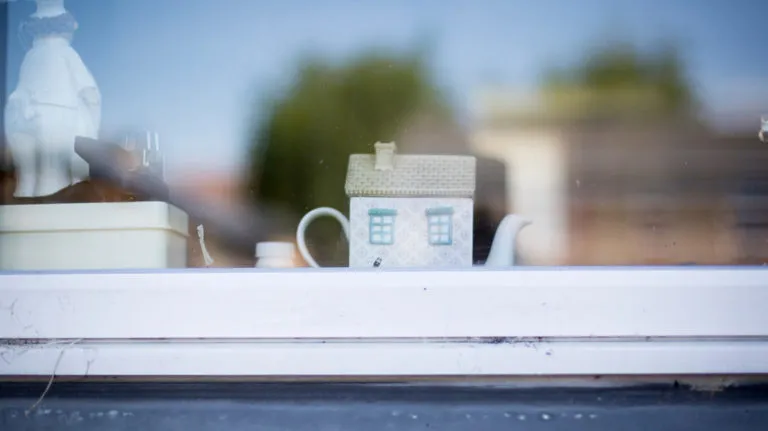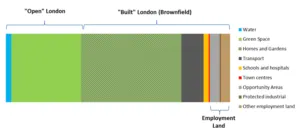A recipe for social housebuilding
Published: by Robin White

With more than 270,000 people currently experiencing homelessness in England, we’re undoubtedly seeing the impact of 40 years of failure in housing policy. At the same time, house prices are far out of reach, leaving many young families trapped in expensive and insecure private rentals.
This is why, throughout 2018, Shelter led a Big Conversation to investigate what’s going wrong. We sought the views of the public, experts and social and private renters. Their input was analysed by an independent commission of 16 people from all walks of life, with a variety of political persuasions. The year-long investigation culminated in the publication of Building For Our Future: A Vision For Social Housing early in 2019, which recommended the delivery of 3.1 million new social homes over the next 20 years if we’re truly going to tackle the housing emergency.
We know this level of ambition is possible, because it’s been done before. In the three and a half decades after World War Two, we built 4.4 million social homes at an average rate of 126,000 per year. Yet in 2017/18, just 6,500 new social homes were delivered in England.

This dramatic reversal in the delivery of social housing is at the heart of our current housing emergency. A reliance on the private rented sector and on private developers to deliver the affordable, secure homes we need is simply not a viable solution. Instead we must look again to social housing as the answer, and take the steps needed to make a new generation of social housing a reality.
From vision to reality: the ingredients for social housing
The achievements of Nye Bevan and Harold MacMillan in building the foundations for the delivery of millions of new homes throughout the 1950s-60s are rightly still lauded today. However, simply looking back at those achievements is not enough – what we need now is to recreate this success.
To do this, there are three key ingredients we need:
1. Political support for social housebuilding
A commitment to solving our national housing emergency already unites politicians. In recent months we have seen commitment to deliver more homes overall, changes that will allow councils to borrow to build again, and an increased focus on the need to reform the private rented sector.
While this is all welcome, what is also needed is a firm commitment – from every political party – to the delivery not just of more homes, but of more social rent homes. Social housing is the only long-term solution to our national housing emergency.
2. Increased investment in social housing
For too long there’s been little or no investment in social housing. A focus on shared ownership and other products has seen grant funding move away from the social housing we sorely need, with the 2010-15 Affordable Homes Programme making no specific provision for social housing at all. Given this, it’s hardly surprising that the pipeline of much-needed social housing delivery has declined so dramatically in recent years.
However, at the upcoming Spending Review, we have a chance to change this. This is an opportunity we can’t miss, and by making more investment in homes, we can also reduce spending in areas such as housing benefit in the long run as we reduce our reliance on the overpriced private rented sector.
3. Reform our broken land market
Since 1995, the value of land has increased by a colossal 544% and land cost now makes up 70% of the cost of a new home. This means that it’s harder and harder to get land into development at a price that makes delivering social homes at scale possible.
On top of this, the sheer cost of land means that when funding is available, much of it is lost in assembling land instead of being directed towards delivering social housing or community infrastructure. By changing our outdated land laws to ensure land comes into development at a fairer price, we can make sure that more of our investment in housebuilding goes on delivering the homes we need. Already these reforms have cross-party, cross-sector support, with think tanks such as Onward and IPPR joining with MPs including Clive Betts and Nick Boles to call for change. This year, through the Queen’s Speech, the government can draw on this support and take forward this vital change.
This recipe offers us a chance – a chance to transform our approach to housebuilding and deliver social homes at a scale not achieved for a generation.
Why now
With 1.1 million people on social housing waiting lists and 127,000 children waking up homeless last Christmas, it’s clear that we need action. By making the changes that Shelter proposes, and by rediscovering a commitment to ‘housing as the first of the social services’1, we can transform our housing system.
We can give young families a safe, secure and affordable home that also offers them a route to homeownership in the future by providing them with the ability to save, and even the possibility of exercising a right to buy.
At the same time, we can support older renters, many of who currently live in the private rented sector with the constant instability and uncertainty that doing so brings.
And, in addition, a publicly funded social housing programme remains the only way for government to meet its target to deliver 300,000 new homes of all types a year.
Social housing is key to solving our national housing emergency, and in the coming months we have the chance to begin taking the steps we need to make this a reality.